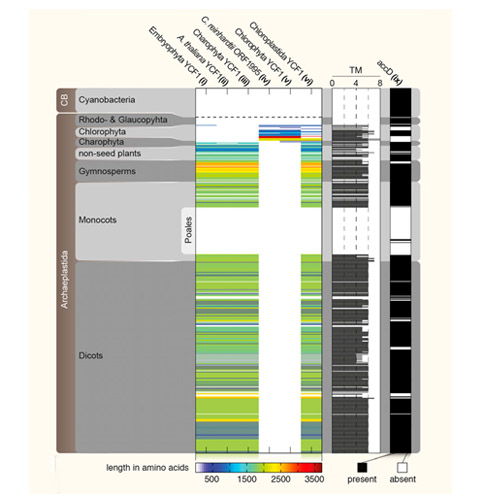YCF1: A Green TIC?
27-Mar-2015
The Plant Cell, Vol. 27: 1827–1833, www.plantcell.org/cgi/doi/10.1105/tpc.114.135541
A pivotal step in the transformation of an endosymbiotic cyanobacterium to a plastid some 1.5 billion years ago was the evolution of a protein import apparatus, the TOC/TIC machinery, in the common ancestor of Archaeplastida. Recently, a putative new TIC member was identified in Arabidopsis thaliana: TIC214. This finding is remarkable for a number of reasons: TIC214 is encoded by ycf1, so it would be the first plastid-encoded protein of this apparatus; ycf1 is unique to the green lineage (Chloroplastida) but entirely lacking in glaucophytes (Glaucophyta) and the red lineage (Rhodophyta) of the Archaeplastida; ycf1 has been shown to be one of the few indispensable plastid genes (aside from the ribosomal machinery), yet it is missing in the grasses; and 30 years of previous TOC/TIC research missed it. These observations prompted us to survey the evolution of ycf1. We found that ycf1 is not only lacking in grasses and some parasitic plants, but also for instance in cranberry (Ericaceae). The encoded YCF proteins are highly variable, both in sequence length and in the predicted number of N-terminal transmembrane domains. The evolution of the TOC/TIC machinery in the green lineage experienced specific modifications, but our analysis does not support YCF1 to be a general green TIC. It remains to be explained how the apparent complete loss of YCF1 can be tolerated by some embryophytes and whether what is observed for YCF1 function in a member of the Brassicaceae is also true for, e.g., algal and noncanonical YCF1 homologs.











